In recent years, an increasing number of people are opting for solar energy to reduce electricity expenses. Therefore, the installation of solar power for homes is becoming more relevant.
The global cumulative capacity of solar photovoltaic installations has been continuously growing since 2000. In 2022, the capacity reached 1177 GW, and it is expected to increase to 2626 GW by the end of 2023.
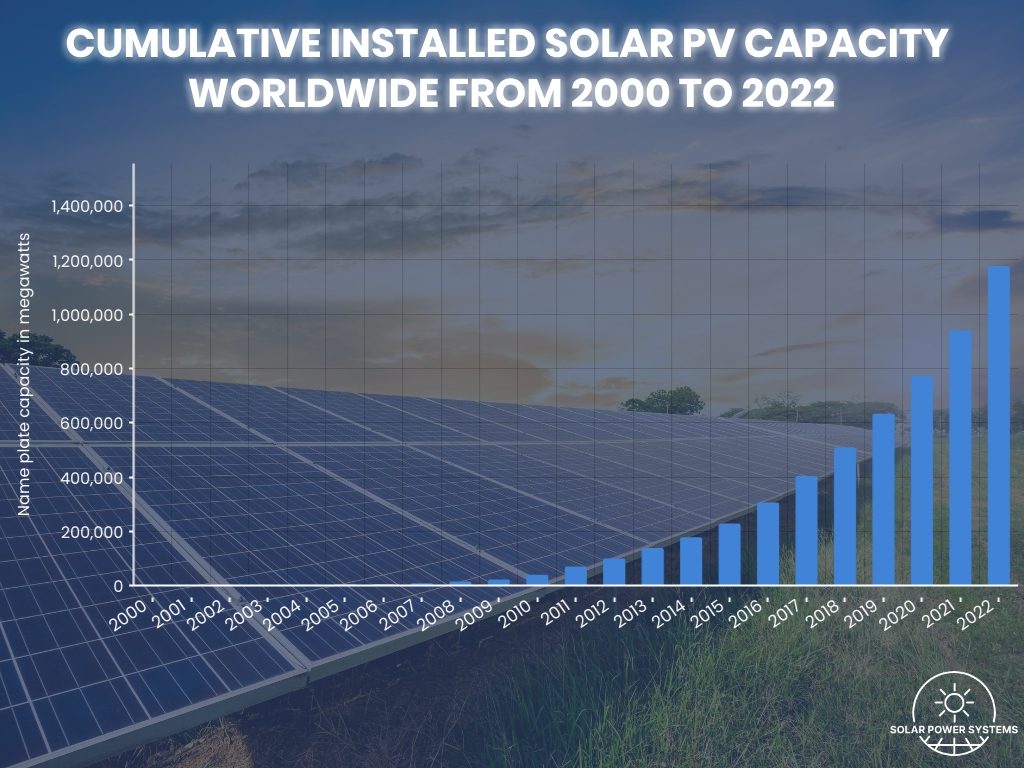
There’s nothing surprising about this trend, as solar panels provide high energy efficiency both on sunny and cloudy days. Harnessing solar energy not only helps save on electricity but also reduces environmental pollution.
Wouldn’t it be great to have such a device at home? All you need to do is choose the right technical components and perform the installation correctly.
We will explore key aspects of connecting solar panels for homes, from selecting the installation location to methods of solar connection and integration into your energy system. If you’re constructing a new home or improving your current power setup, understanding the proper way to plug in solar panels for homes is key to making the most of renewable energy.
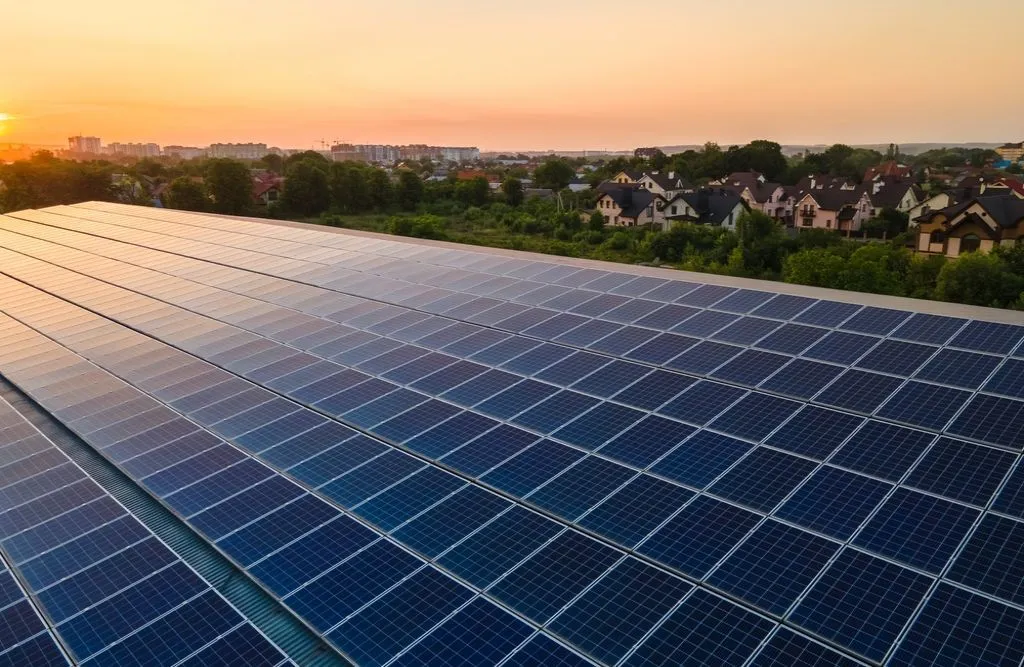
How much is your electricity bill per month?
Help us understand what you`re currently spending
The Phenomenon of Solar Energy Popularity
Solar connection has become highly sought after, and for good reason. The main advantages of solar panels are the accessibility of the energy source, its inexhaustibility, and efficiency. In addition, the use of a home solar power system is crucial not only for cost reduction but also for the preservation of ecosystems.
Let’s delve into why alternative energy sources are so popular.
New High-Paying Job Opportunities
The use of solar energy, like other sources, creates new job opportunities. Over the past decade, the number of jobs in the solar energy sector in the USA has increased by 167%. The U.S. Bureau of Labor Statistics has included “solar photovoltaic installers” in the list of rapidly growing professions, with an expected growth rate of 22% from 2022 to 2032.

Environmental Cleanliness
In light of recent trends in the fight to protect the climate from global warming, solar energy is the most promising industry. It partially replaces energy obtained from non-renewable fuel resources.
The production, transportation, installation, and use of solar power stations are virtually free from harmful emissions into the atmosphere. Even if present, they are negligible compared to traditional energy sources, resulting in almost zero environmental impact.
Reduction in Financial Costs
According to NREL, the cost of solar panels connected to grid decreased in 2021 compared to 2020. For residential homes, it decreased by 3.25%, for private enterprises by 10.71%, and for government institutions and public utilities by 12.31%.
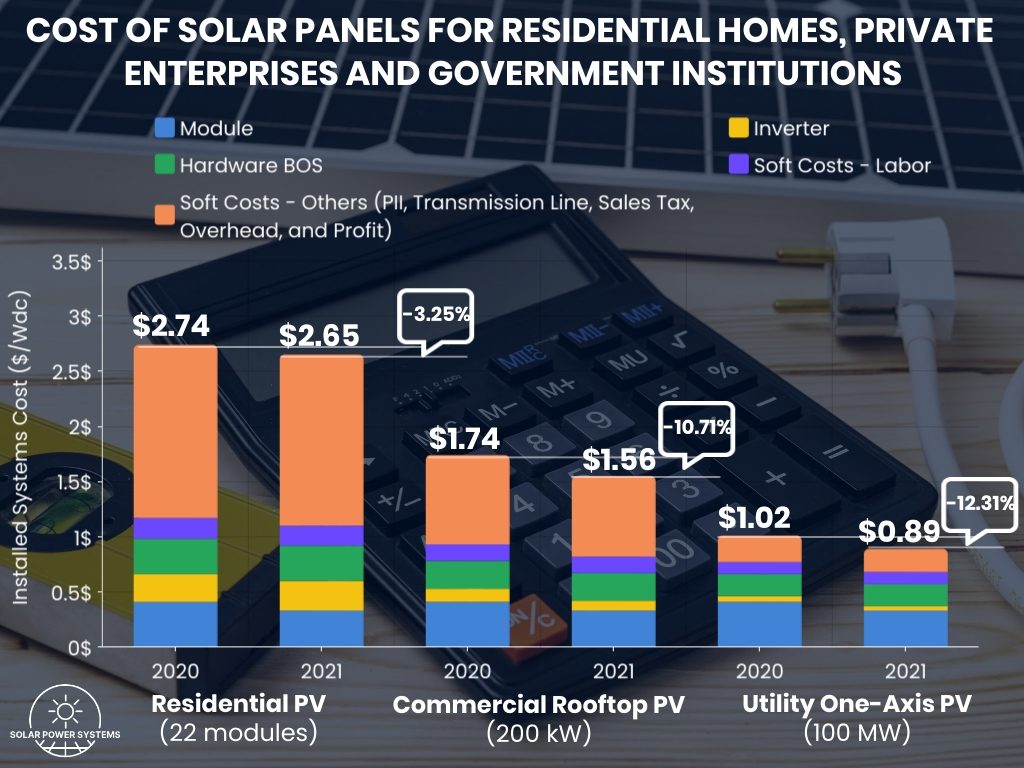
A house with solar panels is a cost-effective solution, and here’s why:
- You won’t be dependent on periodic power outages.
- There is no need for complex maintenance; only periodic cleaning of the working surfaces is required.
- You can choose the power and voltage yourself, combining the panels into the system that suits you.
- The maintenance cost of solar panels is virtually nonexistent: you pay once and then enjoy the generated energy.
Solar Panels for Homes: Structure and Operation Principles
When planning to transition to using solar power for a home, it’s essential to understand the components of the installation and how it works.
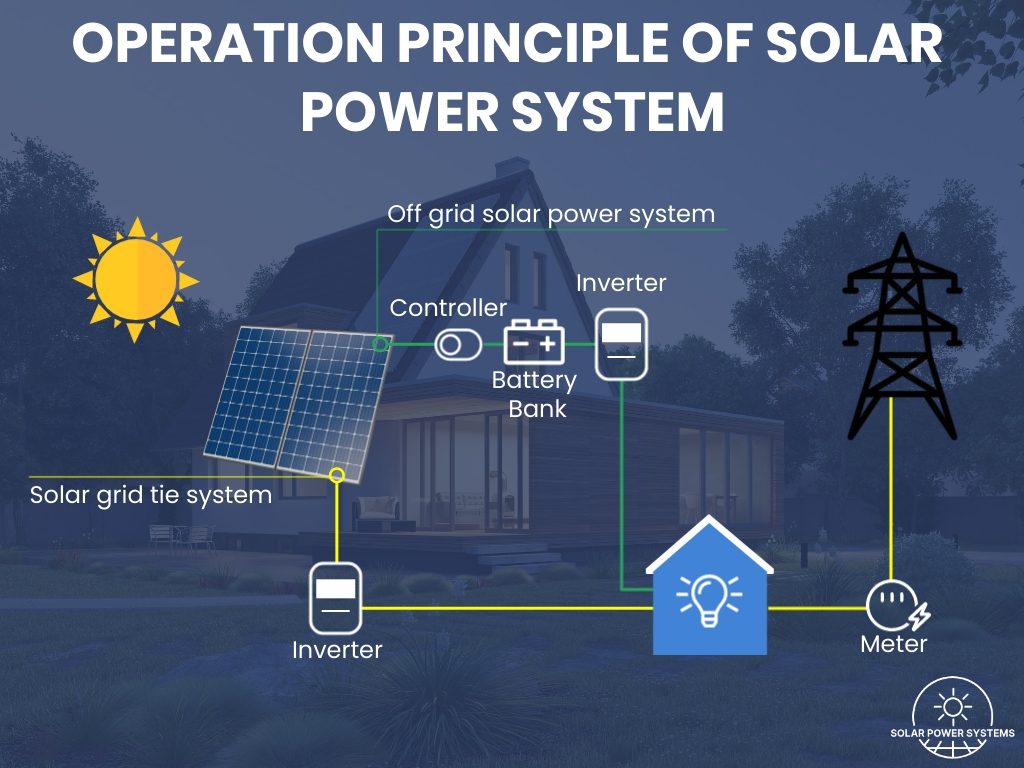
In a standard solar power setup, the creation of solar electricity consists of the following components:
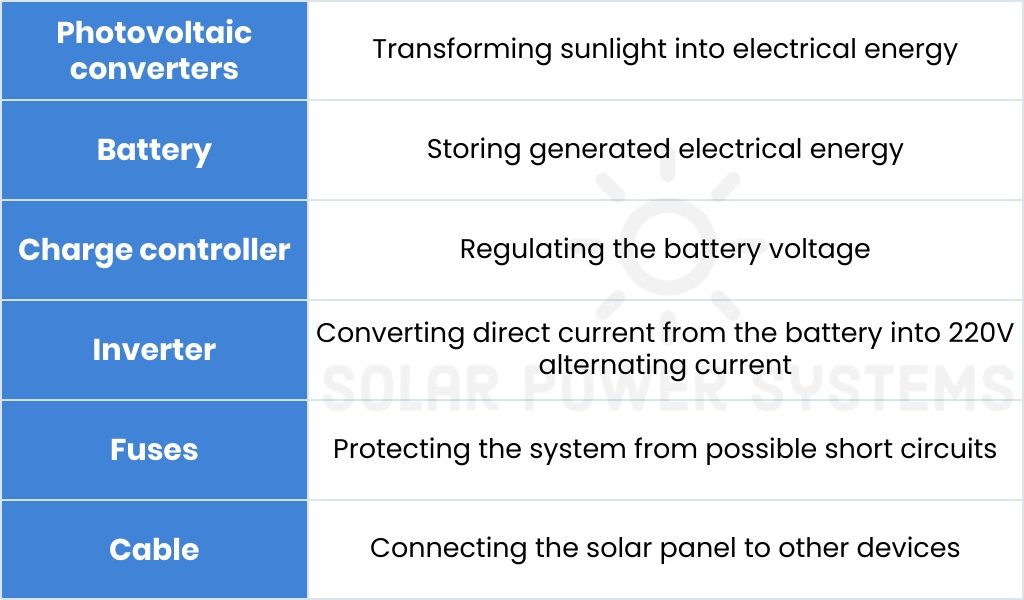
All these photovoltaic elements are often made of silicon, a semiconductor. The photovoltaic converter can be compared to a sandwich, as it consists of two plates. One plate has an excess of electrons, and the other has free spaces, “holes” for electrons. A zone exists between these two plates that inhibits surplus electrons from migrating to the region where they are deficient.
How do solar panels work on a house? The working principle is as follows:
- Photons of light hit the plate and transfer solar energy to electrons.
- Electrons move in a circuit in one direction, forming a direct current.
- The inverter converts the direct current into alternating current.
Yet, a single silicon element or two aren’t adequate to generate the voltage and power needed for household use. As a result, they’re combined into complete panels, linked either in parallel or in series.
The area of these panels can range from a few square centimeters to several square meters. By increasing the number of panels, you can achieve greater power produced by the solar battery.
However, the efficiency of a solar battery depends not only on the area but also on the intensity of sunlight and the angle of incidence of rays. Therefore, the topography and geographical latitude of the house, weather, and time of year play a key role.
Types of Solar Panels for Homes
There are various types of solar panels. Let’s consider the most common ones.
Monocrystalline
This type of solar power home panels is distinguished by a uniformly dark blue color on the surfaces. They are made from pure silicon — it’s a pricier yet more effective solution.
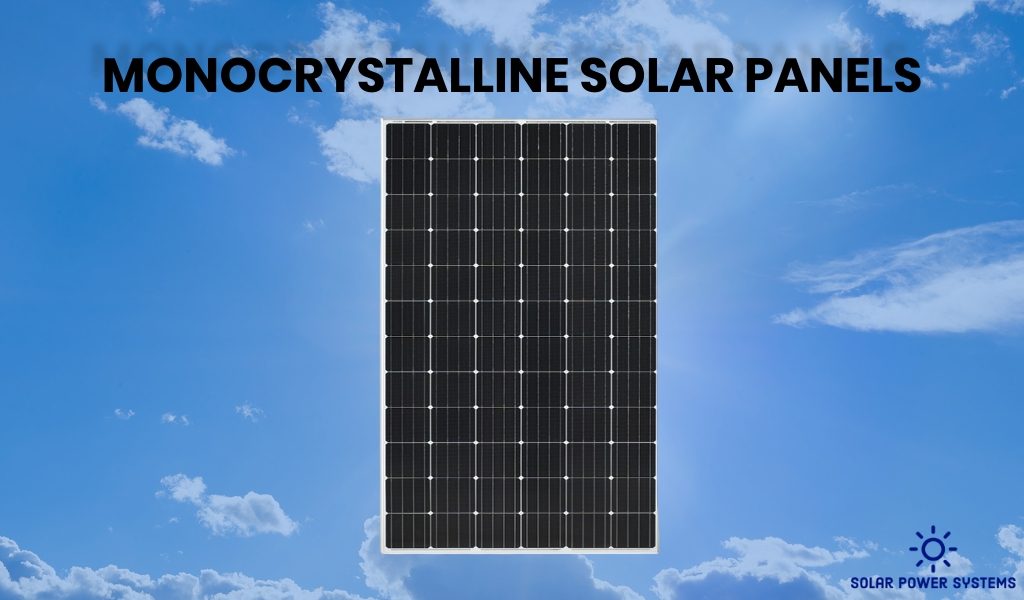
The high cost is due to the difficulty of orienting the crystals in one direction. Monocrystalline solar panels show the highest efficiency (up to 25%) only when sunlight falls perpendicularly. Because of this, it is recommended to install them at a height or in open areas. For northern regions, it’s better to choose other types of solar panels for homes.
Polycrystalline
These solar panels have an uneven blue surface due to crystals oriented in varied directions. Polycrystalline panels use less pure crystals compared to monocrystalline ones.
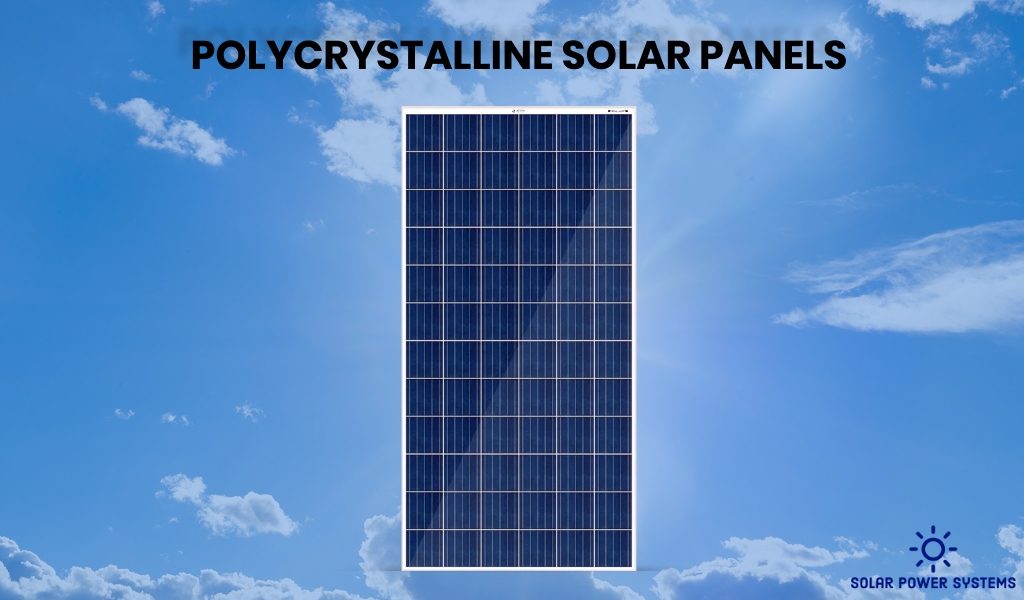
Thanks to the multi-directional crystals, even in scattered light, they achieve high efficiency — 18%. Polycrystalline panels are less efficient than monocrystalline types but generate more energy, especially in cloudy weather.
Due to the material’s heterogeneity and production characteristics, the construction cost is significantly reduced. In the case of polycrystalline solar panels for homes, the orientation of crystals is not controlled, and after cooling, they are cut and processed.
Polycrystalline panels are installed on the roofs of public buildings and private houses, making them in high demand in the market.
Where to Install Solar Panels and What to Consider?
Choosing a location for installing a solar setup is a crucial step that affects its efficiency.
Batteries can be placed in practically any well-lit area:
- On the roof of a private house
- On the balcony of a multi-story building
- On the adjacent area near the house
The main thing is to provide the necessary conditions to achieve maximum productivity. When installing solar panels on your own, it is essential to consider 5 key criteria:
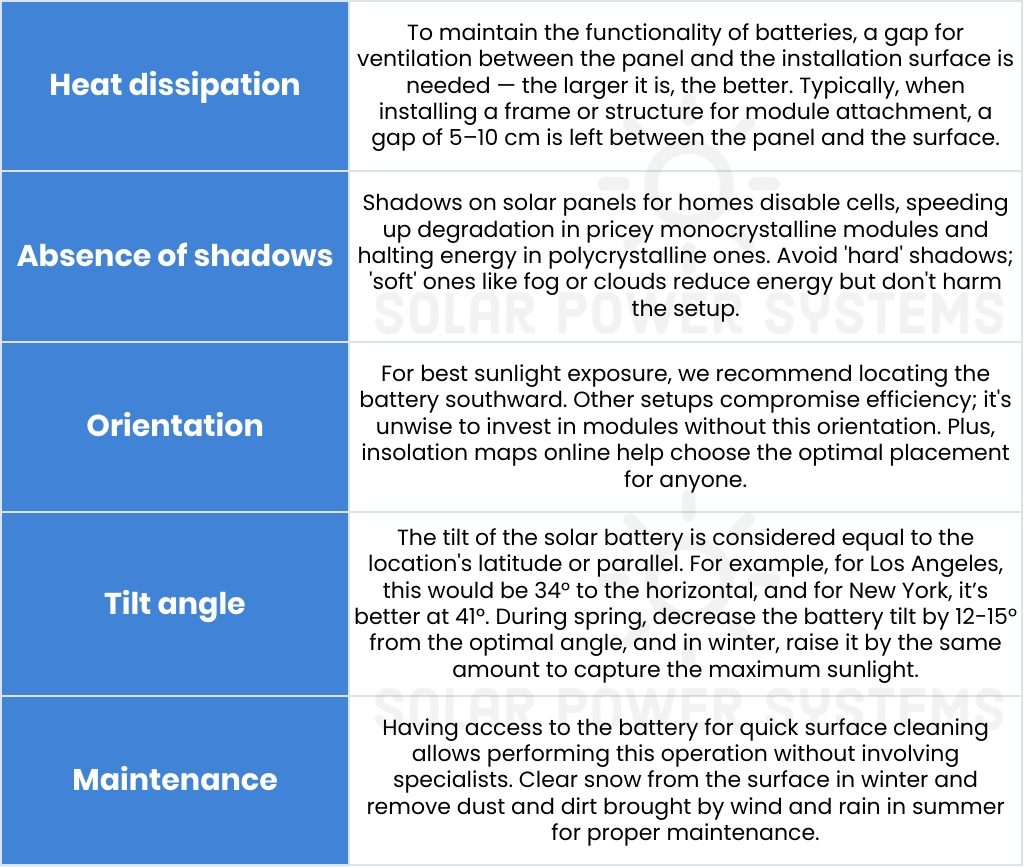
Regardless of where you plan to carry out the installation, you should not make any changes to the panel structure or drill additional holes without professional tech assistance.
Ways to Connect Solar Electric Panels for Houses
There are various ways to connect solar panels, depending on your needs and possibilities. Here are several primary methods:
Series Connection (Sequential)
Sequential solar connection is when the batteries are connected one after another, like cars on a train.

How does it work? When panels are connected this way, their voltage adds up. For example, if we have two batteries of 6 volts each, together they will provide 12 volts. However, the current remains unchanged.
This method is good when you need more voltage to power something powerful, like a refrigerator in a house. Thus, the more panels you have, the higher the voltage you get.
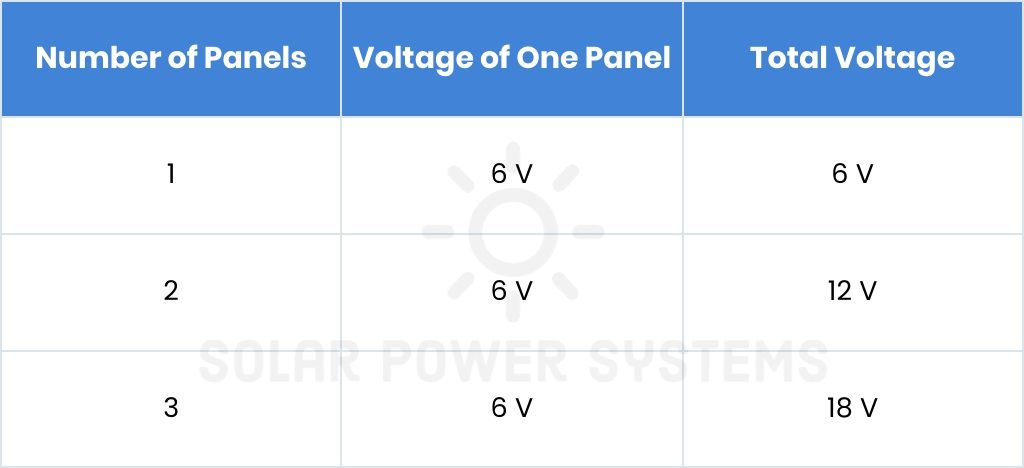
The sequential connection of solar batteries can be compared to building a tall tower from small cubes, where each new cube increases the tower’s height. Similarly, each additional battery increases the voltage, not the physical height, in our scenario.
Parallel Connection
Parallel solar connection is like building railroad tracks side by side instead of one after another. These solar batteries have two ends – “+” and “–”. In a parallel connection, all “+” and all “–” are connected together.

How does it work? When connected in parallel, the voltage stays constant, for instance, at 6 volts. However, the current adds up. It’s like pouring water into a single large bathtub from multiple faucets, which increases the flow rate of water.
This method is good when you need more energy (current), for example, to charge many small toys.
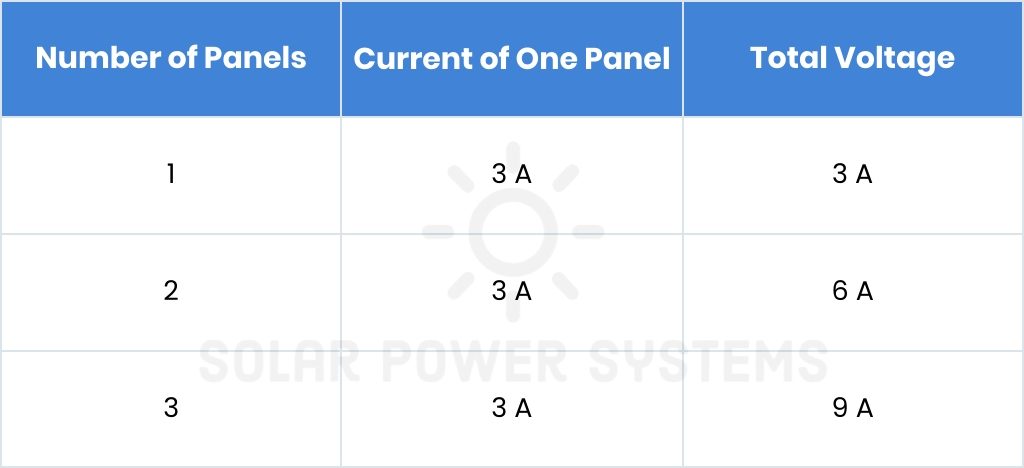
As we can see, the more panels you connect, the higher the total current. Thus, the parallel solar connection of solar batteries is like collecting water from multiple streams into one large lake. Each new panel increases the amount of energy we can use.
Series-Parallel Connection
This solar connection method involves connecting some batteries in series (one after another) and then connecting these groups in parallel (side by side). Imagine building two long trains and then placing them on parallel tracks.

How does it work? When groups are linked in series, the voltage accumulates. Then, when these groups are connected in parallel, the current is also combined.
This is like stacking blocks to make two tall towers and then joining them together to make them stronger and able to bear more weight.
This method is good when you need a lot of energy and you want the system to be reliable. Additionally, if one solar panel breaks, the others will still work.
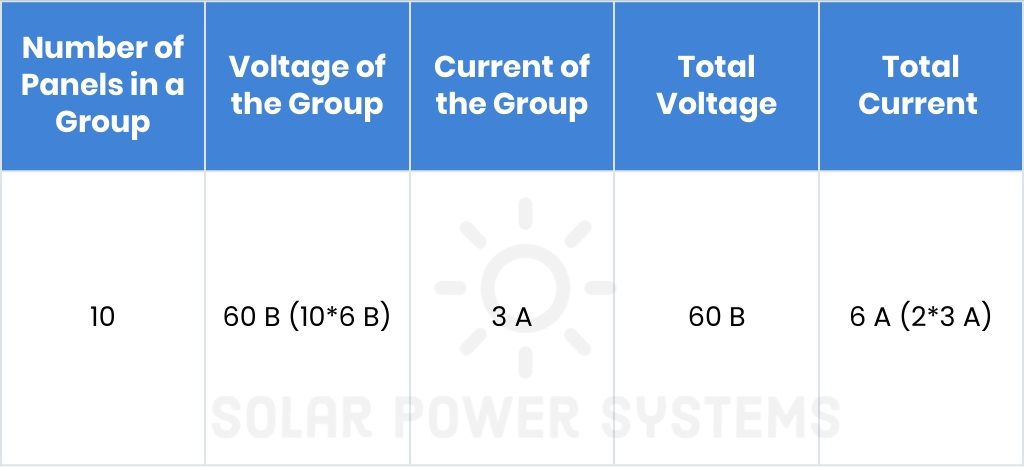
Here, the voltage in each group increases due to a series connection, and the total current grows due to a parallel solar connection.
How to Install and Connect Solar Panels: Step-by-Step Guide
To install solar panels to power a house, you will need the following tools and materials:
- Solar panels
- Mounting brackets
- Cables and connectors
- Inverter
- Batteries (if necessary)
- Charge controller (if necessary)
- Measurement tools
Wiring solar panels is done in the following sequence:
- Planning: Determine the optimal location for installing solar panels, considering the direction and tilt angle for maximum sunlight exposure. Calculate the required number of solar panels based on your energy consumption.
- Purchase and equipment preparation: Buy the type of solar panels you need and all necessary components: inverters, cables, brackets, etc. Prepare tools such as a drill, screws, wrenches, etc.
- Mounting brackets: Install the mounting brackets for solar panels on the chosen surface (for instance, roof, ground, balcony, etc.). Adhere to relevant building codes and safety requirements.
- Solar panel installation: Install the solar panels for homes on the brackets, following the manufacturer’s instructions. Ensure proper solar wiring and mounting.
- Cable connection: Connect the solar panels to the inverter following the electrical diagram provided by the manufacturer. Ensure proper insulation and protection from weather conditions.
- Adding solar panels to existing systems: Connect the inverter to your home’s electrical grid or system. Ensure that solar connections are made correctly and safely.
- Testing and debugging: Test the system to ensure that your solar panels are generating electricity and make corrections to the system operation if necessary.
- Monitoring and maintenance: Set up a monitoring system to track the performance of solar panels for homes. Periodically perform technical maintenance to prevent and address potential issues.
It’s crucial to follow local safety standards and regulations when installing and connecting solar panels. If you’re not experienced in electrical work, it’s best to rely on professionals for solar connections.
Empowering Homes with Solar: A Comprehensive Guide to Installation and Connection
Solar panels for homes are an innovative and environmentally sustainable way to generate electricity. If you add solar panels to house, you will not only reduce dependence on traditional energy sources but also contribute to a decrease in carbon emissions.
There are different types of panels and solar connection methods that allow you to achieve maximum efficiency from your solar energy system.
Follow our advice, and solar energy will become a reliable source of electricity for you and your family. You’ll never have to wonder how to connect solar panels to house again.

